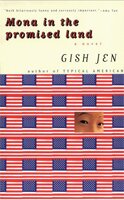|
Then
Morris Gleitzman
2009, Puffi n Books, London, England, 183 pages
One day in the future, when Richmal Crompton's army defeats the Nazi's, I'll climb out of here and be the best human being I can for the rest of my life. To show people what Zelda was like. ‘She was only six,' I'll say, ‘but she had the loving heart of a ten-year-old.'
This book is the second book, by Morris Gleitzman to focus on the fictional characters, Feliz and Zelda, is dedicated to all the children who have to hide. It is a novel set during the Holocaust and it explores a beautiful and unlikely friendship between two children. It is touching, raw and painfully true. The images are vivid and detailed and stated matter-of-factly. As Gleitzman best explains, “this is my imagination trying to grasp the unimaginable. Their stories are the real stories.†This haunting and touching novel is a must read for young book lovers age nine and older.
 (Reviewed in JTA Issue March 09)
Â
The Boy in the Striped Pyjamas
John Boyne
2006, David Fickling Books, London, England, 216 pages
He waited for about ten minutes and was about to turn back for home extremely worried that he would have to leave Out-With without seeing his friend again, when a dot in the distance became a speck and that became a blob and that became a figure and that in turn because the boy in the striped pyjamas.
This book, recommended for ages nine and up, is a beautifully written work of fiction. It tells the story of a sheltered and privileged nine-year old, named Bruno, whose father's ‘very important' job with the Third Reich requires the family to move from Berlin to Out-With Poland. Entirely unaware of Hitler's Final Solution, Bruno discovers a ‘work camp' behind his home. There, through the barbed-wire, he befriends a nine-year old Jewish inmate named Shmuel. A beautiful friendship grows. The book explores friendship and innocence and ultimately the realisation that once you discover the truth, things can never go back to how they were.
 (Reviewed in JTA Issue March 09)
Â
The Book Thief
Markus Zusak
2005, Alfred A. Knopf, New York, New York, 552 pages
Summer came. For the book thief, everything was going nicely. For me, the sky was the colour of Jews. When their bodies had finished scouring for gaps in the door, their souls rose up. When their fingernails had scratched the wood…They just kept feeding me, Minute after minute. Shower after shower.
The Book Thief, recommended for mature teenage readers, is one of the few young adult books that can successfully cross over into the adult fiction market and be a hit in both. This is a grim yet sometimes darkly humoured story of a girl named Liesel during the Second World War. Zusak bravely chooses Death to narrate Liesel's story. The book begins with Death's first meeting with Liesel when her young brother dies. She finds a gravedigger's manual buried in the snow and from there death's fascination with her grows. The book is beautiful, vivid and intense. The character of Death is carefully crafted and the images and colours he describes ironically come to life.
(Reviewed in JTA Issue March 09)
Shanghai Shadows
Lois Ruby
2006, Holiday House Inc., New York, New York, 284 pages
After all the Jewish schools were closed down and the Nazis began boarding up our shops one by one, Erich and his friends had long hours to fritter away…But there was no action, just talk, and now the rest of those boys were still in Vienna, while we stood in line in far-off China.
This book is marketed for ages 12 and up. It should be of particular appeal to audiences living in China and other parts of Asia, but that said international audiences will be fascinated by the historical backdrop. Lois Ruby superbly describes the vivid sights, sounds and smells and bustle of Shanghai during the Second World War. The characters are sympathetic and appealing. Shanghai Shadows is the story of Ilse Shpann who flees from Nazi-occupied Vienna along with her parents and her brother Erich. The book is the story of the strength of the spirit in a time a great uncertainty. It is filled with suspense, humour and emotion.
(Reviewed in JTA Issue March 09)
 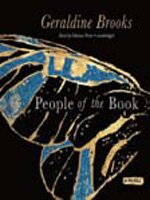
|
People of the Book
Geraldine Brooks
2008, Penguin Books, New York, New York, 372 pages.
As many times as I've worked on rare, beautiful thing, that first touch is always a strange and powerful sensation, It's a combination between brushing a live wire and stroking the back of a newborn baby's head. I had the forms positioned, ready. I hesitated for just a second - a Hebrew book, therefore spine to the right - and laid it in the cradling form.
This book, written by a Pulitizer Prize winning author, is a book of intrigue, mystery and romance woven into unique historical settings. The novel begins in 1996 in Sydney when Hanna Heath, a rare book conservator, is asked to travel to Sarajevo to examine a rare book that had been recently recovered. The book, the Sarajevo Haggadah, once opened unlocks a mystery that weaves through time. Piece by piece, clues from a drop of wine, a stray hair, an insect wing and a missing clasp, reveal the life of the book itself. The Haggadah, along with Brooks, takes the reader on an exciting journey through centuries of turmoil and upheaval. This is a great read.
(Reviewed in JTA Issue February 09)
Light Fell
By Evan Fallenberg
2009, Soho Press, New York, New York, 240 pages
She pictures pain so sharp it sears her belly and she doubles over, her breathing ragged. She pictures nausea and fatigue. She pictures herself surrounded by her sons, and she pictures her own loneliness. But before she can picture her death she straightens to full height, unfurls her fi sts, breathes. She pushes the unwanted images away.
Light Fell is a truly beautifully written fi rst novel that tackles some heavy topics. The characters are real, honest and well developed. It is the story of Joseoh Licht, a professor, who reaches out to reconnect with the children he left twenty years ago. Licht, a once married religious Israeli and father of five sons, left his family when he came to terms with the fact that he was gay and in love with an Orthodox rabbi. The novel is brave and moving and brings to light many real and complex issues in Israeli society.
(Reviewed in JTA Issue February 09)
Exile
By Richard North Patterson
2007, Henry Holt and Company, New York, New York, 563 pages
Only once - with Hana - had nothing mattered but another person, an experience so frightening, exhilarating, and, in the end, scarifying that he had endured it only by clinging to his plans until they became who he was. It was a sin, David had come to believe, to be surprised by your own life.
For Patterson fans, this book is a must. Some will say it is perhaps his best. The story centres on the Israeli-Palestinian conflict. While recent events in the Gaza Strip are obviously not included, Patterson has managed to take a very serious contemporary issue and make it into a readable novel of suspense and mystery. Some of the characters, like Hana Arif and David Wolfe, may resemble cardboard cut outs a bit, but even for those not sold on the genre, this is an exciting and interesting read. It is a hard topic to tackle in a way that is both balanced and realistic.
(Reviewed in JTA Issue February 09)
Fragments
By Binjamin Wilkomirski
1996, Schoken Books, New York, New York, 155 pages.
We're the living contradiction to logic and order. If I'm going to write about it, I have to give up the ordering logic of grown-ups; it would only distort what happened. I'm not a poet or a writer. I can only try to use words to draw as exactly as possible what happened, what I saw exactly the way my child's memory held on to it; with no benefit of perspective or vanishing point.
This is the book much more famous for the scandal it created than for the literary merit. Binjamin Wilkomirski received praise and acclaim from literary critics worldwide, including many of the most respected Jewish international literary reviews, for his hauntingly vivid personal memoir. The book graphicly details the horrors in the struggle for survival for a child of the Holocaust. Wilkomirski was later exposed as a fraud. It is impossible to now read this novel without being first poisoned by Wilkomirski's damaging fraud. But truth be told, had he written this as fiction, it could of perhaps stood on its own merits.
(Reviewed in JTA Issue Dec 08/Jan 09)
Swimming Across the Hudson
By Joshua Henkin
1997, G. P. Putnam's Sons, New York, New York, 230 pages.
I stared at him standing at his father's tombstone, my grandfather and not my grandfather, a bearded man from Eastern Europe whom I hadn't known well but whose picture I'd studied. I'd convinced myself I looked like him. I stood next to Jonathan in that graveyard in New Jersey and watched my father whisper to the dead, his pants legs flapping in the wind as he turned back to face us.
Swimming Across the Hudson is an extremely readable novel that tells the story of a young Jewish man's quest to find himself. He and his brother are both adopted by a Jewish family and he struggles to understand what meaning the details of his origin have on his own identity. The themes of what makes us Jews and how we define ourselves are explored. While the main character, Jonathan comes across as three dimensional, many of the other characters are rather one dimensional. The book presents an often humorous look at a contemporary Jewish family. It might perhaps appeal more to a teen audience.
(Reviewed in JTA Issue Dec 08/Jan 09)
Great Tales of Jewish Fantasy and The Occult-The Dybbuk
and Thirty Other Classic Stories
Compiled, translated and introduced by Joachim Neugroschel
1987, The Overlook Press, Woodstock, NY, 709 pages
I could picture a day in the town, the way people lived, the way they got up, and the way they went to sleep…I could picture a Jewish home in the daytime, the door never shut for even an instant, poor people coming in and out, young and old, women, girls and little children. Among them, the gracious wives of synagogue managers.
This is a good book to have in any collection of Jewish literature. Some of the stories are well known such as The Dybbuk and The Golem, while others are more obscure. The works are arranged into seven sections, each corresponding with a day of creation, ending with the Rabbi Nakhman's Tale of the Seven Beggers. As Neugroschel explains, the collection ends with a question rather than an answer. This anthology is filled with stories that one can read over and over again, each time discovering something new.
(Reviewed in JTA Issue November 2008)
The Boy Who Loved Anne Frank
By Ellen Feldman
2005, W.W. Norton Company, New York, New York, 264 pages
How can I describe walking through the house? My past was everywhere, and nowhere. It struck like grit between the floorboards, worn smooth by how many millions of feet. It glared down at me from the map where we had followed the progress of the Allies, who arrived too late for my mother and father and Anne and Margot and Mrs. Frank and Pfeffer.
This is the tragic fictional tale that asks the reader to suspend reality and assume that Peter van Daan, who shared the attic hideaway with Anne Frank, survived the Holocaust. The author had been told on a 1994 tour of the Anne Frank House that records had never been located documenting the fate of Peter. While researching the book, the author learned that Peter did in fact die at Mauthausen three days before liberation. While Holocaust fictional works are not easy to do well, Feldman has been able to create a truly compelling work. This tragic story is the quest of one man to disassociate himself from his own haunting past.
(Reviewed in JTA Issue October 2008)
Old Men at Midnight
By Chaim Potok
2001, Alfred A. Knopf, New York, New York, 273 pages
The mysterious stream of strident sound rolled from Reb Binyomin as he gave forth the calling of notes from the shofar, for he had been given that singular, shattering honor. He put the shofar to his trembling lips. He blew: Tekiah, Shevarim, Teruah. On the second day of Rosh Hashanah, in the middle of the morning service, the German army arrived.
Old Men at Midnight is very different from the rest of Chaim Potok's body of work. This book is not in the format of a novel and instead presents three distinct tales that are loosely connected through the characters' connection to one person, Ilana Davita Dinn. It is a powerful work that is able to draw the reader in to connect with each of these characters. The theme of war and survival runs through each of these sections and leaves the reader wishing for more than just a glimpse at their lives. While compelling, it is not Potok's best.
(Reviewed in JTA Issue October 2008)
The Saturday Wife
By Naomi Ragen
2008, St. Martin's Griffi n, New York, Newyork, 304 pages
When things that should bring one's walls tumbling down do not, the unexpected reprieve sometimes brings about the exact opposite one would anticipate: not relief and gratitude and rehab, but the idea that one can take even greater risks and get away with it.
Delilah, the physically beautiful yet emotionally damaged main character in this overly embellished story of a Yeshiva girl, makes the mistake of falling for the wrong young man who destroys her reputation. She is forced to quickly marry a young, rabbinical student to set her world right. The Saturday Wife tells the story of Delilah and Chaim and the outlandish path that their life takes. While fi ne in concept, the challenge of balancing a traditional life with the temptations of the outside world, this book does little more than unrealistically tell a story of a social climbing rabbi's wife and attempt to humorously stereotype the Orthodox way of life. It is far from Ragen's best.
(Reviewed in JTA Issue September 2008)
Not Me: A Novel
By Michael Lavigne
2007, Random House, New York, New York, 320 pages
After a little while I realized he had forgotten I was in the room. The space between us seemed to grow as if I were standing on a dock, and he were sailing away on the Queen Mary. I say the Queen Mary because he once actually did sail away on her, and I really was left behind, waving. Still, it was unthinkable that I would have a troubled relationship with my father. If I was not the perfect son, he was certainly the perfect father.
An unforgettable book chronicling one man's journey to discover the true identity of his ailing father. Michael Rosenheim, the painfully flawed main character, always believed he was the son of a concentration camp survivor until his father, suffering from Alzheimer's disease, gives him a set of journals describing the life of an SS offi cer who posed as a Jew to save himself when the camps were liberated. Weaving stories of the past and the present, the reader questions what the truth really is until the very end. A great read that will stay with you long after you put it down.
(Reviewed in JTA Issue September 2008)
Those Who Save Us
By Jenna Blum
2004, Harcourt Books, Orlando, Florida, 479 pages
The American has the same wistful air about him as Gehard's old friend, the kicked-dog hopelessness of a man whose looks have condemned him to watching pretty women from afar…She would like to claw at her face with cracked nails… Yet he has saved her.
A heart wrenching story of one woman's saga during World War II and her daughter's quest to learn the truth about that time in their lives. Set in both the past and the present, Those Who Saved Us tells the story of Anna, a gentile young woman dangerously in love with a Jewish man, and Trudy, her grown daughter who is desperate to learn and understand the truth about her past. Guilt and shame are the main themes that drive the lives of both Anna and Trudy; Blum paints both woman as tragic and heroic. Throughout the whole book, the reader is challenged to answer the question show far would you go to survive� This book is a must read.
(Reviewed in JTA Issue September 2008)
The Chosen
By Chaim Potok
1987 reprint, Fawcet, New York, New York, 304 pages
For the first fifteen years of our lives, Danny and I lived within five blocks of each other and neither of us knew of the other's existence. Danny's block was heavily populated by followers of his father, Russian Hassidic Jews in somber garb, whose habits and frames of reference were born on the soil of the land they had abandoned.
Set during the 1940s in Brooklyn, New York, this is the story of two young boys brought together by an accident, who form a friendship that will forever shape their lives. Danny, an ultra religious Hasidic Jew and Rev, a modern orthodox Jew, while both of the same religion, they are from worlds that are as different as night and day. Together, over the course of time, they discover the true meaning of what it is to follow one's own destiny, even if at a high price. The Chosen is a moving story of religion, faith, friendship and family that is a modern classic for people of all ages.
(Reviewed in JTA Issue September 2008)
Extremely Loud & Incredibly Close
By Jonathan Safran Foer
2005, Hamilton Books, London England, 326 pages
To my unborn child: I haven't always been silent, I used to talk and talk and talk and talk, I couldn't keep my mouth shut, the silence overtook me like cancer... I couldn't finish the sentence, her name wouldn't come, I tried again, it wouldn't come, she was locked inside me… ‘Want' was a word I lost early on, which is not to say I stopped wanting things. I wanted things more.
This book proves that the extraordinary talent that Foer exhibited in “Everything is Illuminated†was just the start of things to come. This book follows the soulful journey of Oskar Schell a preteen who has been traumatised by the death of his father in the September 11th attacks. Foer beautifully connects the tragedy and loss suffered by Oskar back to the tragedy that traumatised his grandparents during the bombings of Dresdon in World War II. Foer's characters, while anything but average, perfectly capture a sense of real humanity. It is a beautiful told quest that is impossible to put down.
(Reviewed in JTA Issue April 2008)
China Doll
By Talia Carner
2006, Ansonia Station, New York, Windsprint Press, 322 pages
Her voice lifted above the ceremonial courtyard of the Supreme Harmony Palace, above the audience of thousands with rapture in their eyes. Yesss. These people were hers, and she was theirs. Here in the Forbidden City, she stood on the very spot where emperors of the Ming and Qing dynasties had extorted, decreed and ordained.
Talia Carner, a seventh-generation sabra, creates this gripping story of an international music pop star driven by her love for a Chinese orphan. Nola Sands' life changes when a baby is thrust into her arms during a concert tour of China. Sands is determined to save this baby from the fate of other babies in China's orphanages. She embarks on an incredible journey to save her baby against all odds. Carner's own exposure to Chinese orphanages during her participation in the 1995 International Women's Conference in Beijing drove her to tell this story.
(Reviewed in JTA Issue March 2007)
Suite Francaise
By Irene Nemrovsky, translated by Sandra Smith
2006, Alfred A. Knoff, New York, New York, 395 pages
The Red Cross vans, with no passengers-for now…the field kitchen, bumping along at the end of the procession like a saucepan tied to a dog's tail. The men began singing, a grave, slow song that drifted away into the night. Soon the road was empty. All that remained of the German regiment was a little cloud of dust.
Irene Nemrovsky wrote this masterpiece in the early 1940s while living in Paris. In 1942, Nemrovsky, a well known Jewish writer, was arrested and deported to Auschwitz where she was killed at the age of thirty-nine. Her two young daughters survived, in hiding, and took this manuscript with them. The result is a long awaited well crafted novel and the story of the mass exodus from Paris. It is filled with struggles for survival and beauty in even the smallest of details and portraits of humanity.
(Reviewed in JTA Issue March 2007)
Accidents: A Novel
By Yael Hedaya
2005, Metropolitan Books, New York, New York, 464 pages
She wondered what would happen if whatever he had would not go away, either gradually or at once, because she had been seeing him sitting at his computer looking cramped for a long time now… But with her father it would be different, a paralysis of the spirit.
Accidents is the first novel written by Yael Hedaya. It is a love story, set in Tel Aviv, of two people who have for the most part given up on truly living their lives. The main characters, Yonaton Luria and Shira Klein, are both authors, haunted by memories but able to find love again. The characters, in this intimate portrait, are well developed and the story is moving. The novel was well received in Israel, where it made its debut.
(Reviewed in JTA Issue March 2007)
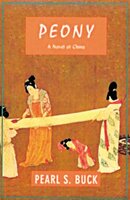 Â Â |
Peony
By Pearl S. Buck
2007, Berkley, California, Bloch Publishing Company, 338 pages
It was spring time in the city of K'aifeng, a late spring in the northern Chinese province of Honan…Even in such shelter the peach blossoms were still the only rosy buds at Passover. Within the courts of the house of Ezra ben Israel the peach blossoms had been cut several days early and had been forced to bloom in time for the feast.
It is a return to the classics with Peony by the Pulitzer Prize winning author. This book is based on true events that took place in K'aifeng, China over a century ago. Peony is sold as a bondmaid into the home of a wealthy Jewish family. Peony is considered to be one of Buck's best novels. While beautifully portraying a story of unrequited love, she also explores both cultures, Jewish and Chinese, in a historic framework. Themes of assimilations, filial duty and socio-economic hierarchy are also explored without distracting from Pearl's usual, graceful prose.
(Reviewed in JTA Issue February 2007)
The Book of Lights
By Chaim Potok
1997, New York, New York, Ballantine Books, 400 pagesÂ
Strange Asian names, bloodied villages, battered marines, wandering refuges, charging yellow hordes, brutal hills, murdered civilians,. It was there, distant from them. They had more immediate matters than war to consider: ancient texts, new ideas, the need for fresh concepts to replace their crumbling fundamentalism.
In this poetic tale, Chaim Potok gives life to Gershon Loran a rabbinic student who travels to Korea to serve as a chaplain. Gershon's journey is interwoven with his friend, Arthur Leidon, who is haunted by his father's legacy as the inventor of the atomic bomb. Both young men travel to the far end of the globe on a search for answers that they were unable to find at home in the streets of Brooklyn or locked inside libraries studying. This story is a beautiful, dark, yet hopeful quest for meaning.
(Reviewed in JTA Issue February 2007)
MONA IN THE PROMISED LAND
By Gish Jen
Vintage Books (Random House)
1997, 304 pages
“And how similar the Chinese are to the Jews, all of a sudden! What with their cultures so ancient, and so much value placed on education. How are classes at the temple? she asks Mona for a change…and is it true that Jewish mothers are just like Chinese mothers, they know how to make their children eat?â€
Mona's Chinese family moves to Scarsdale and Mona is thrown into a crowd of Jewish high school friends. It seems perfectly natural for her to become Jewish too. Mona and her Jewish friends take on their parents, adolescence and 1968. The parallel universes of Mona's Chinese immigrant parents and her friends' Jewish parents brush against each other ever so gently, just enough to make you laugh.
(Reviewed in JTA Issue August 2006)
What do you like to read?
Please submit your book reviews to
Jewish Times Asia.Please include an excerpt from the book.
Please email:
This e-mail address is being protected from spambots. You need JavaScript enabled to view it
Â
|





















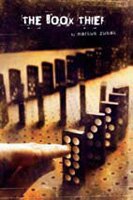
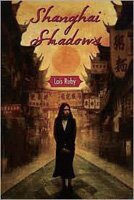

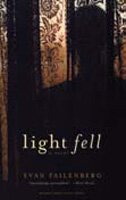
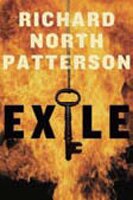
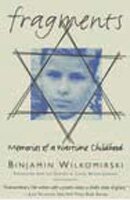
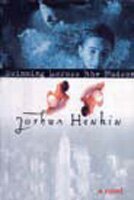
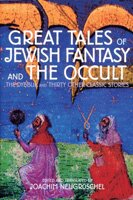
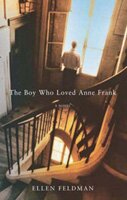
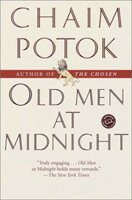
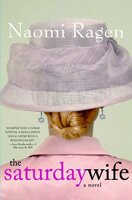

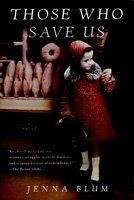
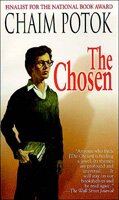
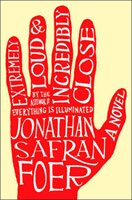
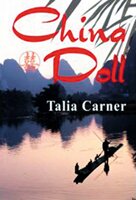
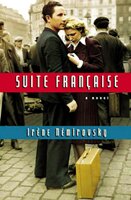
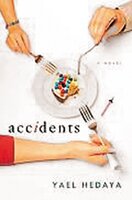
 Â
 
